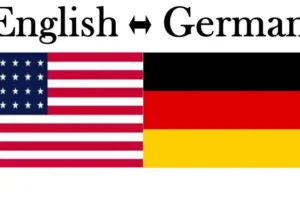
English and German both have ‘standard’ and ‘non-standard’ dialects
If you speak English, you’ve probably noticed the variety of dialects found around the English-speaking world. Different dialects of German exist as well, some of which are simpler to grasp than others.
The Standard German dialect is frequently referred to as “German” or “High German/Hochdeutsch,” much as Standard English is frequently referred to as “English.” Both languages have or have had contact with other languages and a significant geographic range. This indicates that some locations experience sound and grammatical changes that other areas do not.
The
dialectal differences in Germany tend to run along a north-south axis, but
there are also distinctions between dialects spoken in the east and west.
German
features sound change “lines,” which serve as a general delineation
of where things are pronounced in notably different ways in the flatter versus
more hilly and mountainous portions of Germany. This is why German dialects
tend to be differentiated along north-south lines.
The
Uerdingen and Benrather lines, for instance, indicate where the ch sound is
pronounced more softly (front) vs harsher (back). German speakers often make
the ch sound more like a k sound above the lines, but below the line, the ch is
still a soft sound, occasionally even sounding like a sh.
Additionally,
you may have noticed that individuals in Rheinland pronounce the ch softer than
those in Bavaria (to the east) (to the west). The “standard”
pronunciation will still be used by people on both sides of the divide, and
dialect distinctions are more of a gradient than a distinct line.
Because
of the size of the nation, American English has a little more latitude when it
comes to dialectal distinctions. The pronunciation varies from north to south
on the East Coast and as far west as Texas. This results in some variations in
vowel pronunciation, such as the word “I” being pronounced with a
“ah” in the south and a “I” in the north.
You may also like

Basic level A1

Intermediate Level – B1

